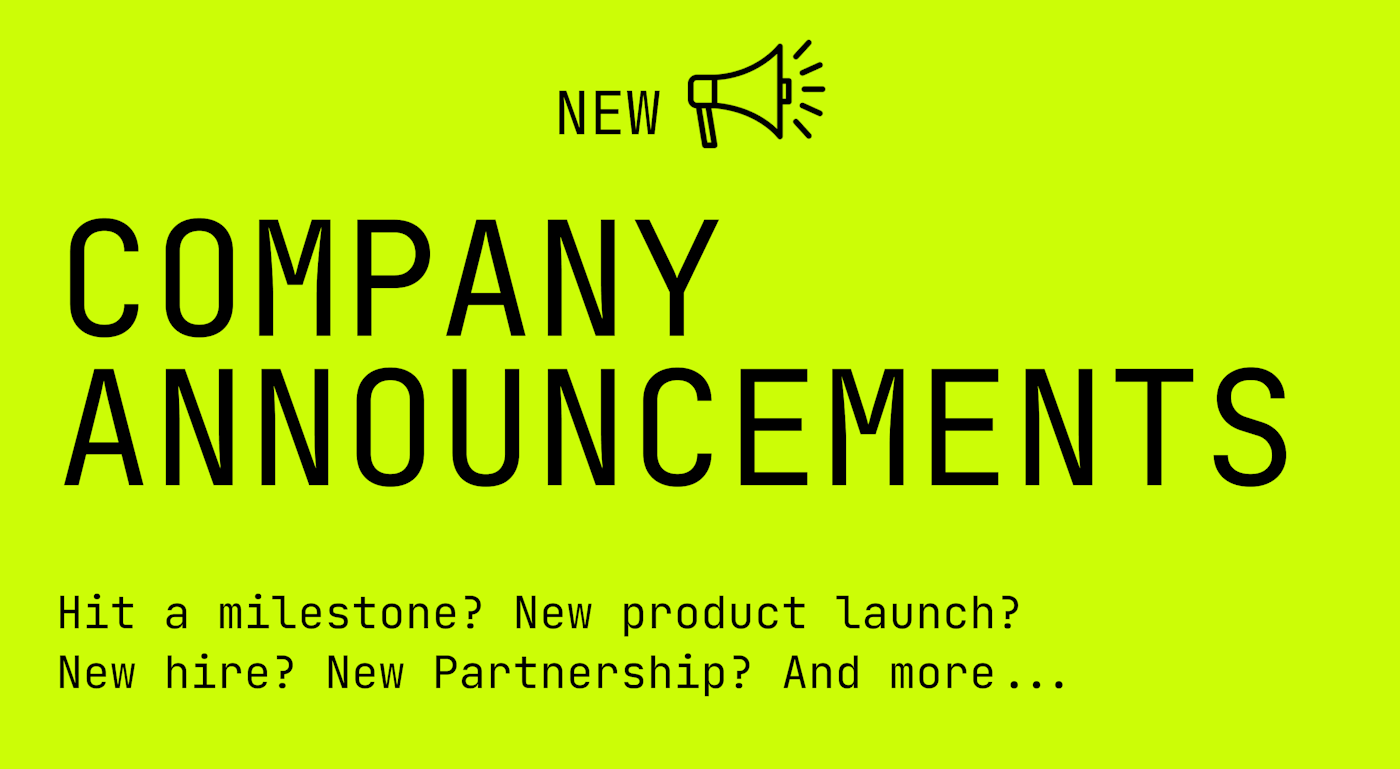How to Create Content That Drives Sales
We create content to drive sales. Yes, we want to educate, entertain, inspire - but the end goal is attract our relevant customers and get them to take an action.
Creating content that drives sales involves crafting a strategy that guides potential customers through their buying journey. From sparking initial interest to closing the deal, every piece of content plays a crucial role. But how do you ensure your content is engaging and effective in converting leads? What strategies can you implement to make your content resonate at each stage of the conversion funnel?
We'll explore the nuances of creating top, middle, and bottom of funnel content, and how each type can work together to boost your sales. You'll learn how to leverage the LIFT model to enhance your content's value proposition, urgency, relevance, clarity, and trustworthiness. Plus, we'll dive into the power of visuals and layout, and how to use analytics to continuously optimize your content. Let's get started.
Understanding the Conversion Funnel
Top of Funnel (TOFU): Awareness and Traffic
Creating content that attracts and educates is the foundation of the Top of Funnel (TOFU) strategy. At this stage, the goal is to capture the attention of potential customers and introduce them to your brand. This is where you cast a wide net, using a variety of content types to reach a broad audience. Blog posts, social media updates, infographics, and videos are all effective tools for generating awareness.
Multimedia and multichannel strategies are essential here. Leveraging different formats and platforms ensures that you reach your audience wherever they are. For instance, a blog post can be repurposed into a video, shared on social media, and included in an email newsletter. This maximizes your content's reach and caters to different content preferences.
Examples of effective TOFU content include:
- Educational blog posts that address common industry pain points
- Engaging social media posts that spark conversations
- Informative videos that provide valuable insights
The key is to provide value without asking for anything in return, building trust and establishing your brand as a thought leader in your industry.
Middle of Funnel (MOFU): Engagement and Consideration
As potential customers move down the funnel, the focus shifts to engagement and consideration. Middle of Funnel (MOFU) content is designed to nurture leads and build deeper relationships. This is where thought leadership plays a crucial role. According to a survey, almost half (48%) of marketers and industry experts believe that thought leadership content drives sales and leads. By sharing your expertise and insights, you position your brand as a trusted advisor.
Effective MOFU content types include case studies, whitepapers, webinars, and in-depth guides. These formats allow you to explore topics in detail, providing valuable information that helps prospects evaluate their options. For instance, a case study showcasing how your product solved a specific problem for a client can be a powerful tool for demonstrating your value proposition.
Cody C. Jensen, CEO of Searchbloom, emphasizes the importance of addressing pain points and providing solutions.
"You need to seek out pain points and create content that addresses those pain points and then solves them."
This approach engages your audience and moves them closer to making a purchase decision.
Bottom of Funnel (BOFU): Conversion and Sales
At the Bottom of Funnel (BOFU) stage, the goal is to convert leads into customers. This is where you need to develop content that drives decision-making. As Jensen shares, sales letter copy and video sales letters are particularly effective at this stage. These formats allow you to present a compelling case for why your product or service is the best solution for your prospects' needs.
Examples of high-converting BOFU content include:
- Detailed product demos
- Customer testimonials
- Limited-time offers
These types of content provide the final push needed to encourage prospects to take action. Testing different call-to-actions (CTAs) throughout your content can also help optimize conversion rates.
"You'll want to test call-to-actions, or CTAs, throughout the content to drive sales." Jensen, CEO of Searchbloom
Crafting Compelling Content: The LIFT Model
Value Proposition
Defining and communicating your unique value proposition is critical for creating compelling content. Your value proposition should clearly articulate the unique benefits your product or service offers. This involves understanding your target audience's needs and aligning your content with those needs.
To effectively communicate your value proposition, ensure that it is prominently featured in your content. This could be through headlines, introductory paragraphs, or visual elements. The goal is to make it immediately clear why your audience should choose your product over competitors.
Urgency
Creating a sense of urgency can significantly boost conversion rates. Techniques to create urgency include limited-time offers, countdown timers, and highlighting scarcity. For example, phrases like "limited stock available" or "offer ends soon" can prompt immediate action.
Examples of urgency-driven content include flash sales, exclusive discounts, and time-sensitive promotions. These tactics leverage the fear of missing out (FOMO) to encourage quick decision-making. By incorporating urgency into your content, you can drive faster conversions and increase sales.
Relevance
Ensuring your content is relevant to your target audience is crucial for engagement. Personalization and segmentation strategies can help tailor your content to different audience segments. This involves using data and insights to understand your audience's preferences and behaviors.
For instance, segmenting your email list based on past purchase behavior allows you to send targeted content that resonates with each segment. Personalization can also be achieved through dynamic content, which changes based on the viewer's characteristics. This ensures that your content is always relevant and engaging.
Clarity
Clear and concise messaging is essential for effective communication. Your content should be easy to understand, with a logical flow and straightforward language. Avoid jargon and complex sentences that can confuse your audience.
Tips for improving content clarity include using short paragraphs, bullet points, and headings to break up text. Visual elements like infographics and charts can also help convey information more clearly. The goal is to make your content as accessible and digestible as possible.
Anxiety
Addressing and reducing potential customer anxieties is key to building trust. This involves identifying common concerns and proactively addressing them in your content. Trust-building elements such as customer testimonials, case studies, and money-back guarantees can help alleviate fears.
For example, including a section on your website that answers frequently asked questions (FAQs) can provide reassurance to potential customers. Highlighting positive reviews and showcasing your expertise through thought leadership content can also build credibility and trust.
Leveraging Visuals and Layout
The Power of Visual Content
Visual content is a powerful tool for enhancing engagement. Different types of visuals, such as images, videos, infographics, and charts, can make your content more appealing and easier to understand. Visuals can also help break up large blocks of text, making your content more readable.
Best practices for incorporating visuals include using high-quality images, ensuring that visuals are relevant to the content, and optimizing for fast loading times. Videos, in particular, can be highly engaging and effective for conveying complex information. For instance, a product demo video can provide a clear and compelling overview of your product's features and benefits.
Effective Content Layout
Structuring your content for readability and engagement is crucial. An appealing layout can significantly enhance the user experience, making it easier for readers to consume and understand your content. This involves using short paragraphs, headings, and bullet points to break up text and create a logical flow.
The role of short paragraphs and headings cannot be overstated. They make your content more scannable, allowing readers to quickly find the information they need. Additionally, using a clean and simple design with plenty of white space can improve readability and reduce cognitive load.
Using Analytics for Content Optimization
Tracking and Measuring Content Performance
To continuously improve your content, it's essential to track and measure its performance. Key metrics to monitor include page views, time on page, bounce rate, and conversion rates. These metrics provide insights into how your content is performing and where there may be opportunities for improvement.
Tools and techniques for content analytics include Google Analytics, heatmaps, and A/B testing. These tools can help you understand how users interact with your content and identify areas for optimization. For example, heatmaps can show you where users are clicking and how far they scroll, providing valuable insights into user behavior.
Iterative Improvement
Content optimization is an ongoing process. Testing hypotheses and refining content based on data can lead to significant improvements in performance. This involves experimenting with different headlines, CTAs, and content formats to see what resonates best with your audience.
The key is to continuously test, learn, and iterate to ensure your content remains effective and engaging.
By following these strategies and leveraging the insights provided, you can create content that engages your audience also drives sales. Remember, the goal is to guide potential customers through their buying journey, providing value at every stage and ultimately converting leads into loyal customers.
Wrapping It Up
Creating content that drives sales isn’t a “throw it ‘till it sticks” game or just filling up your blog or social media feeds. It's a strategic journey that guides potential customers from awareness to conversion. By understanding the nuances of the conversion funnel and leveraging the LIFT model, you can craft content that resonates at every stage. From educational blog posts that build trust to compelling sales letters that close deals, each piece plays a crucial role in your overall strategy.
Remember, what you say and how you say it are both important. Visuals, layout, and continuous optimization through analytics are key to keeping your content engaging and effective. As you refine your approach, think about the bigger picture and how each piece of content contributes to your brand's story and drives momentum. In the end, the goal is simple - create content that drives sales.





